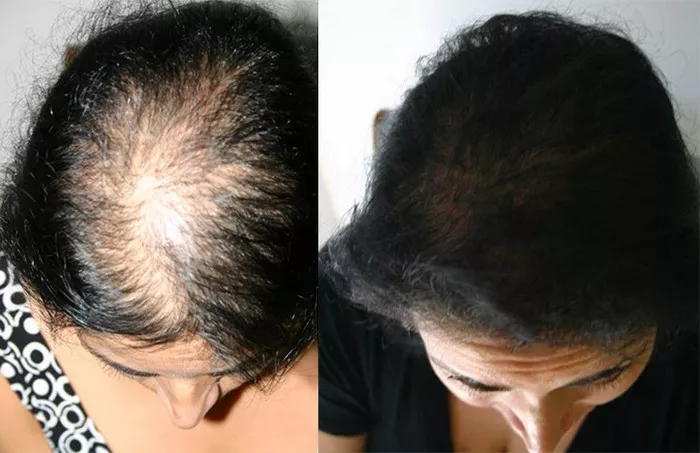In the world of cosmetic procedures, hair transplants have become increasingly popular for those seeking to restore their hairline and regain their self-confidence. However, as with any medical procedure, patients often have concerns about the recovery process. One common question that arises is, “How long does the redness last after a hair transplant?” In this article, we will delve into this topic and provide you with a comprehensive understanding of the duration of redness after a hair transplant.
Introduction to Hair Transplants: A Solution for Hair Loss
Hair loss can be a distressing experience, impacting self-esteem and confidence. Fortunately, hair transplants offer an effective solution. Hair transplantation involves moving hair follicles from one part of the body to another, restoring natural hair growth. Two common techniques are Follicular Unit Transplantation (FUT) and Follicular Unit Extraction (FUE). Candidates with moderate to advanced hair loss are ideal for this procedure, and advancements like robotic transplants and regenerative therapies are reshaping the field. This introduction provides a glimpse into the world of hair transplants, offering hope for those looking to regain a fuller, more confident head of hair.
Understanding the Redness After a Hair Transplant
1. The Initial Phase of Redness (1-2 Days):
Right after the hair transplant procedure, it is normal for the recipient area to exhibit varying degrees of redness. This initial redness is primarily a result of the micro-incisions made during the surgery.
The tiny incisions in the scalp cause small blood vessels to rupture, leading to the red appearance. However, this redness typically fades significantly within the first 24 to 48 hours.
2. The Subsequent Weeks (2-14 Days):
Beyond the initial phase, the redness will gradually decrease over the course of the following weeks. This is due to the body’s natural healing process.
To accelerate the healing and reduce redness during this period, it’s crucial to follow your surgeon’s aftercare instructions. Keeping the scalp clean, avoiding strenuous activities, and applying prescribed ointments can all aid in faster recovery.
3. Managing Redness and Discomfort (2-6 Weeks):
Patients may experience mild discomfort and itching during this time. The redness may persist but become less conspicuous. To alleviate discomfort, your surgeon may recommend using specific shampoos and lotions that are designed to soothe the scalp.
It’s important to note that individual recovery times can vary. Some patients may experience redness for up to 6 weeks, while others might see it diminish more quickly.
Factors Affecting the Duration of Redness
Here are the factors that affect how long redness lasts:
1. Skin Type and Complexion:
The natural pigmentation of your skin plays a crucial role in the visibility of redness. People with fair skin may experience redness more visibly than those with darker complexions.
2. Transplant Technique:
The method used in your hair transplant can also influence the redness duration. Advanced techniques, such as FUE (Follicular Unit Extraction), tend to result in less visible redness compared to older methods like FUT (Follicular Unit Transplantation).
3. Post-Operative Care:
How well you follow your surgeon’s post-operative care instructions will greatly impact the healing process and, consequently, the duration of redness. Proper care can help reduce redness more quickly.
Coping with Redness After a Hair Transplant
Here’s how to deal with redness after hair transplant:
1. Camouflaging Redness (6-12 Weeks):
While redness is part of the healing process, you may want to disguise it during this period. Using makeup or specially formulated concealing products can help you maintain your confidence while waiting for the redness to fully subside.
2. Patience is Key (Up to 12 Months):
The redness after a hair transplant typically fades gradually over time. It’s essential to understand that complete resolution can take up to a year in some cases. However, this is a temporary side effect that will eventually give way to a natural, full head of hair.
3. Consulting with Your Surgeon:
If you have concerns about the duration of redness or experience prolonged redness beyond the expected timeframe, it’s advisable to consult your surgeon. They can provide personalized guidance and address any specific concerns.
See Also: 5 Stages of Hair Transplant Growth: What You Need to Know
In conclusion
The duration of redness after a hair transplant can vary from person to person but typically spans from a few days to several weeks. Understanding the factors influencing this duration and following proper post-operative care can significantly impact your healing process. Remember that patience is essential, and the redness is a temporary phase on your journey to regaining a full head of hair. Always consult with your surgeon for the best guidance tailored to your unique situation.
By adhering to these guidelines, you can ensure a smoother and less red recovery period following your hair transplant, ultimately helping you achieve the results you desire.


